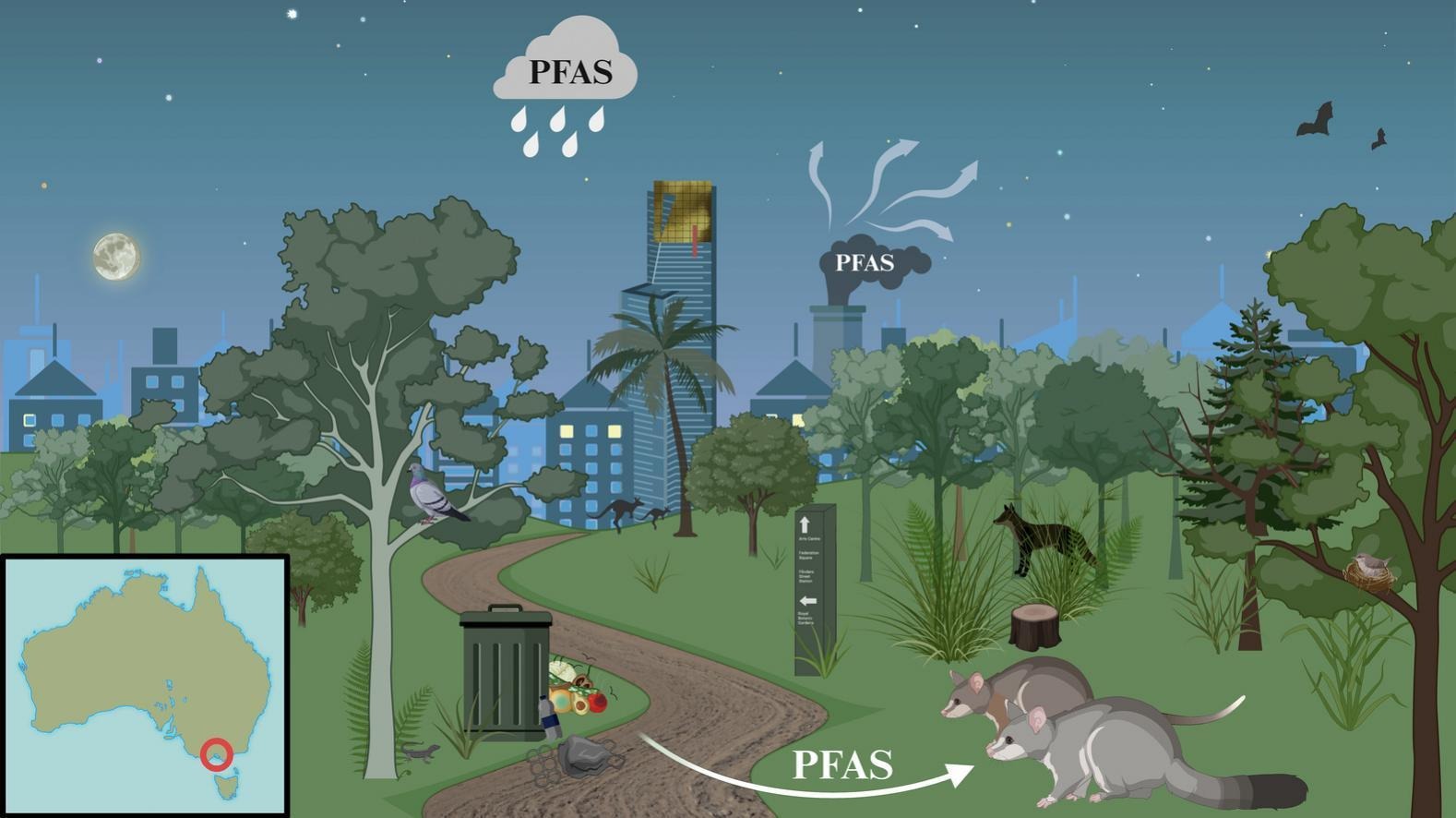Possums living in the Greater Melbourne area have levels of per- and polyfluoroalkyl substances (PFAS, often known as “forever chemicals”) in their livers high enough that their health may be affected, according to a new study. The findings raise questions about animals that occupy similar niches in other urban environments, and what may be in store for humans.
Two Australian possum species have adapted well to urban living: brushtail (Trichosurus vulpecula) and ringtail (Pseudocheirus peregrinus) possums. Sometimes they’ve adapted rather too well, overpopulating areas and killing trees by feeding on their leaves. Nevertheless, they seldom have similar effects in their home range to New Zealand, where, since their introduction, they’ve become a major killer of native birds.
As animals living side-by-side with humans, researchers at the University of Melbourne decided that the city’s possums could be a good test of urban pollution, and made a study of the presence of PFAS in their livers.
“PFAS have been studied widely in aquatic animals, but we know very little about the health impacts of PFAS in terrestrial wildlife, and this is the first study to investigate PFAS levels in Australian marsupials,” said first author and PhD student Ellis Mackay in a statement.
The results are alarming, particularly when it comes to brushtails. The authors found liver concentrations of 16-266 nanograms per gram (parts per billion by weight), with a median of 74 ng/g. This, they note, “is comparable to levels reported in rodents sampled both 3 kilometers (1.9 miles) and 101-200 meters (330-660 feet) away from a chemical-waste site used to neutralize, stockpile, and dispose of hazardous and non-hazardous waste (including persistent organic pollutants) in Nevada.” More and more evidence as to the health effects of PFAS is coming out, some of which the companies that make them knew about for years, but hid.
Ringtails are considerably healthier on this score, with a median of 16 ng/g. The mix of chemicals is also different, with ringtails apparently having mostly ingested PFAS precursor molecules, while the brushtails encounter PFAS directly. Study author Dr Jasmin Hufschmid told IFLScience, “There might be differences in metabolism,” but the team think the stark contrast probably primarily reflects different diets. Ringtails feed almost entirely on fruit and leaves.

This illustration depicts potential PFAS exposure routes for common brushtail and ringtail possums in an urban ecosystem in Melbourne, Australia.
Brushtails are more opportunistic, supplementing those foods with birds’ eggs, soil invertebrates, and the contents of humans’ rubbish bins. “Birds eggs are known to accumulate PFAS, particularly PFOS, Hufschmid told IFLScience, adding, “Brushtails also spend more time on the ground,” while ringtails have little direct soil exposure.
Mackay told IFLScience there have been no equivalent studies published on animals with similar urban lifestyles elsewhere, of which she said raccoons are probably brushtails’ closest international counterparts. “There is one study on red foxes in Oslo, whose PFAS levels were 10 ng per gram,” Mackay said. As primarily carnivores, foxes would be expected to bioaccumulate toxins more than more herbivorous possums.
Mackay told IFLScience: “Marsupials might be really bad at processing these chemicals, or perhaps Melbourne is just much more polluted than Oslo, or maybe the foxes don’t come as far in.” To test that, Mackay intends to study Melbourne’s own foxes, which have become an invasive species.
The team didn’t find any pattern based on the age or sex of the possums in the study, but there are many other questions they can’t answer. The possums were provided by veterinary clinics that had needed to euthanize those brought in for ill health or injury. Consequently, the authors acknowledge, they may not be representative of the population overall. However, if high levels of PFAS exposure mean possums are more likely to become so sick they have to be put down, that’s even more reason to worry about our own exposure.
No data is available on why the possums died, or their geographic locations within the city. Hufschmid explained, “Veterinary clinics often see wildlife for free, particularly when for euthanasia, so they’re overstretched and not keeping detailed records. We just get a bag of possums to study.” Even when the possum’s body might tell the researchers what happened, such as after a car accident, the team didn’t keep records.
The lack of geographic data means the team can’t pin the PFAS on a specific source. Although more than 7 million PFAS chemicals have been produced, Hufschmid told IFLScience that the mix of specific chemicals also doesn’t reveal much about where they are coming from. “A lot have varied applications. PFOS is one of the most common ones, which has many uses,” Hufschmid said. Although there are some large-scale sources, such as firefighting chemicals used at specific locations, PFAS is also used to make furniture and clothes water-resistant.
The study is published in Science of The Total Environment.
Source Link: First Evidence Of High "Forever Chemicals" In Urban Wild Mammals Reveals Australian Possums Contaminated With PFAS